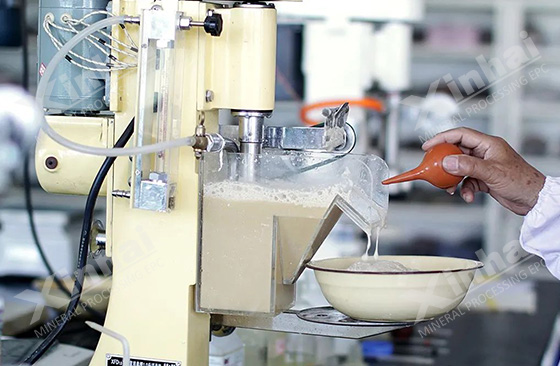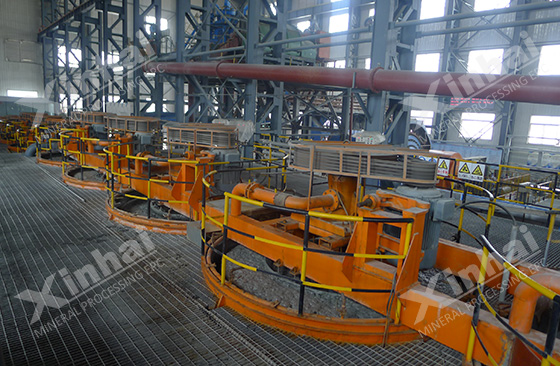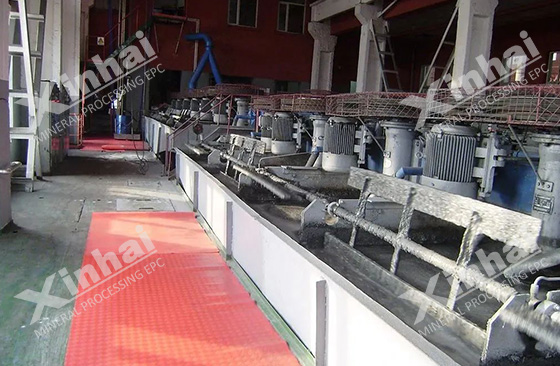
Ore flotation process, as an important ore beneficiation technology, is widely used in large, medium and small mineral processing plants. Chalcopyrite and pyrrhotite are common copper sulfide minerals and iron sulfide minerals. The separation of these two minerals has an important impact on metal smelting and the utilization of copper ore resources. Flotation is one of the important methods to separate these two minerals, but there are many factors that affect the separation of chalcopyrite and pyrrhotite during the flotation process, such as slurry pH, type and amount of collector, type and amount of inhibitors Dosage, etc. This article will elaborate on the factors affecting the flotation separation of pyrite and pyrrhotite from these aspects to help you optimize the flotation process and improve the ore separation efficiency.

The pH value of the ore slurry is one of the important factors affecting chalcopyrite and pyrrhotite. It changes the charge state of the ore surface through sound, changes the interaction between the ore and the flotation reagent, thereby affecting the flotation process. Proceed and adhere to the bubbles. Generally speaking, a higher pH value of the slurry is more beneficial to the flotation of chalcopyrite, but an excessively high pH value will inhibit the flotation of chalcopyrite. A pH value that is too high or too low will cause oxidation or dissociation of the ore surface, affecting the flotation effect. In actual production, it is necessary to select an appropriate pH value range based on the ore properties of chalcopyrite and pyrrhotite to optimize the flotation effect.

The role of the collector in the flotation process is to adsorb on the surface of the ore, change the hydrophilicity and hydrophobicity of the ore, and make the bubbles adhere to the ore to complete flotation separation. Different collectors react differently to different chalcopyrite and pyrrhotite. For example, xanthogen is usually used for the flotation of sulfide ores, while non-ionic collectors are more suitable for the flotation of some copper oxide ores. In addition, the amount of collector is also an important factor affecting the flotation effect. Appropriate dosage of collector can improve flotation efficiency. If the dosage is too small, the collector will not be fully adsorbed on the ore surface. If too much, the foam will be too dense and the flotation chemicals will be wasted. In short, selecting the correct type of collector and adding the appropriate amount of collector are crucial to the flotation process.

The main function of inhibitors is to inhibit the emergence of certain ores in minerals, thereby achieving the separation of target minerals. In the flotation process of chalcopyrite and pyrrhotite, the type of inhibitor can have an important impact. For example, selecting appropriate sulfide inhibitors can effectively inhibit the flotation of chalcopyrite, separate it from bubbles, and improve flotation efficiency. The dosage of inhibitors should also be controlled to avoid affecting the flotation of target minerals. For example, during copper ore flotation, the use of certain inhibitors can reduce the flotation of iron ore, thereby improving the flotation efficiency of copper ore.

The above content is the effect of the pH value of the slurry, the type and dosage of the collector, and the type and dosage of the inhibitor on the flotation process of chalcopyrite and pyrrhotite. In actual production, these factors need to be reasonably selected and controlled based on the properties and actual needs of different ores to optimize the flotation process and improve the separation effect. By controlling these parameters scientifically and rationally, complex ore combinations can be better dealt with, mineral processing efficiency can be improved, and resource utilization can be improved. Xinhai Mining recommends conducting mineral processing test to better understand the various characteristics, composition, composition, etc. of the ore. Based on the test results, customized design of the flotation process of chalcopyrite and pyrrhotite can improve the mineral processing efficiency and precision.
To find out more about our products and solutions, please fill out the form below and one of our experts will get back to you shortly.